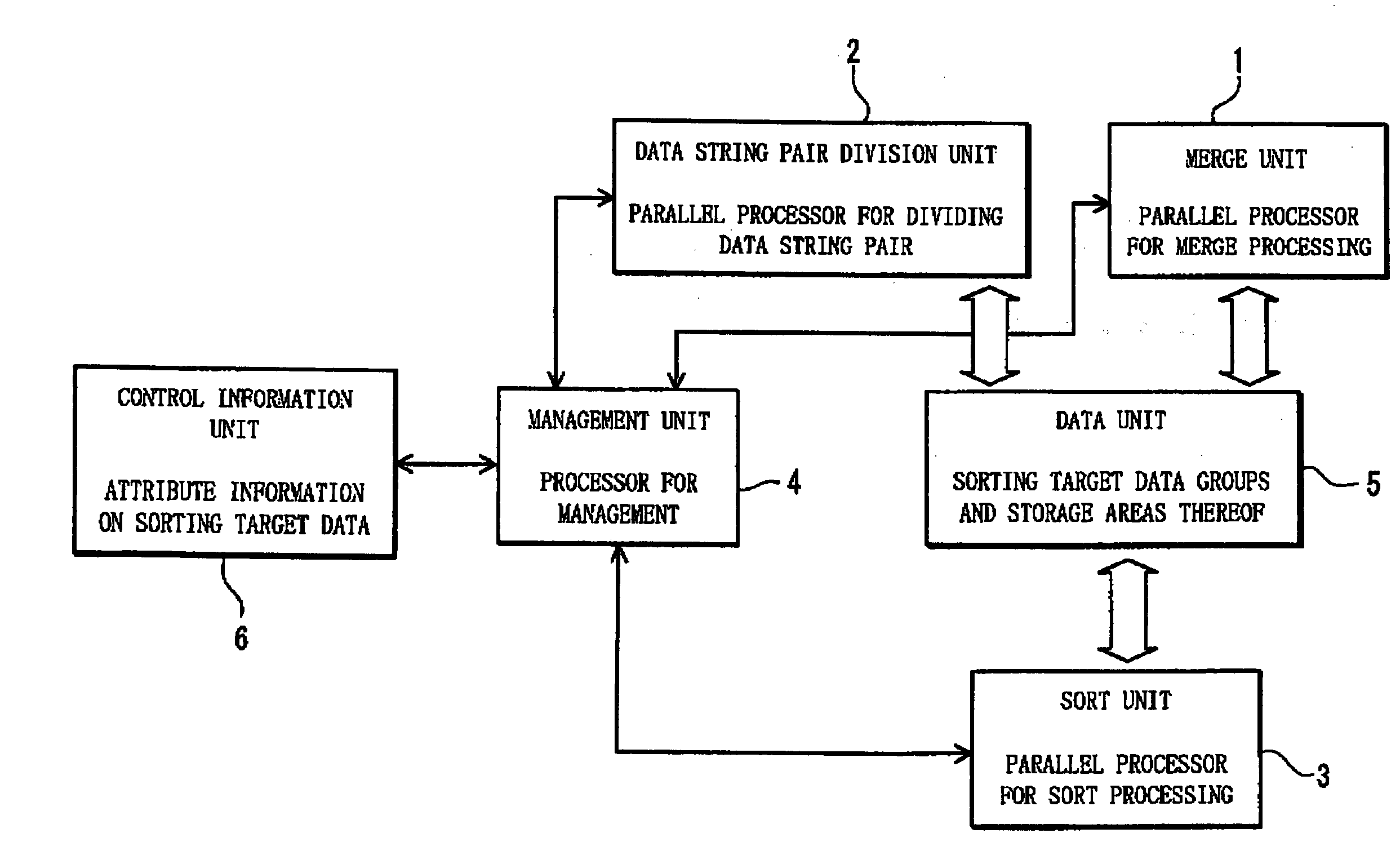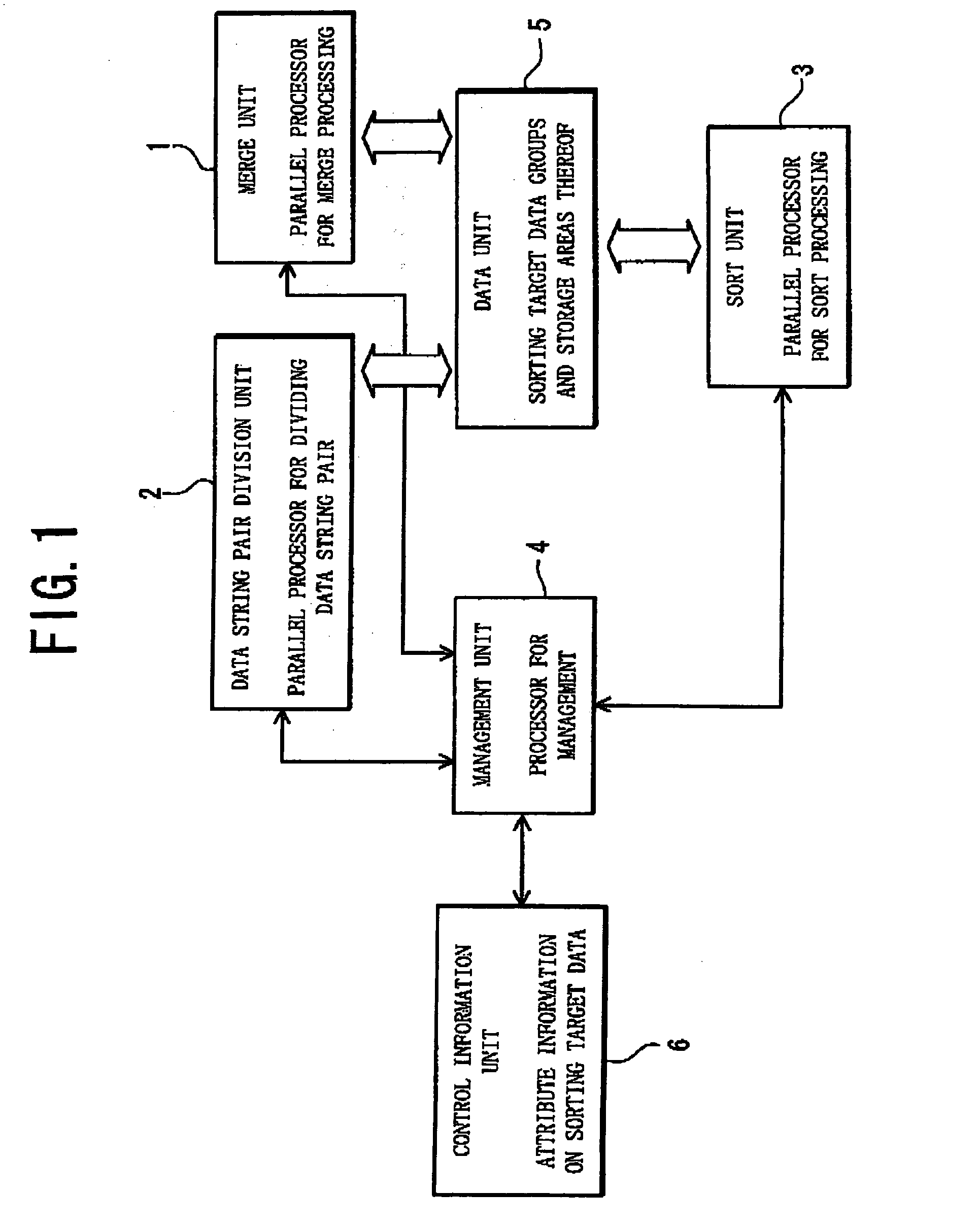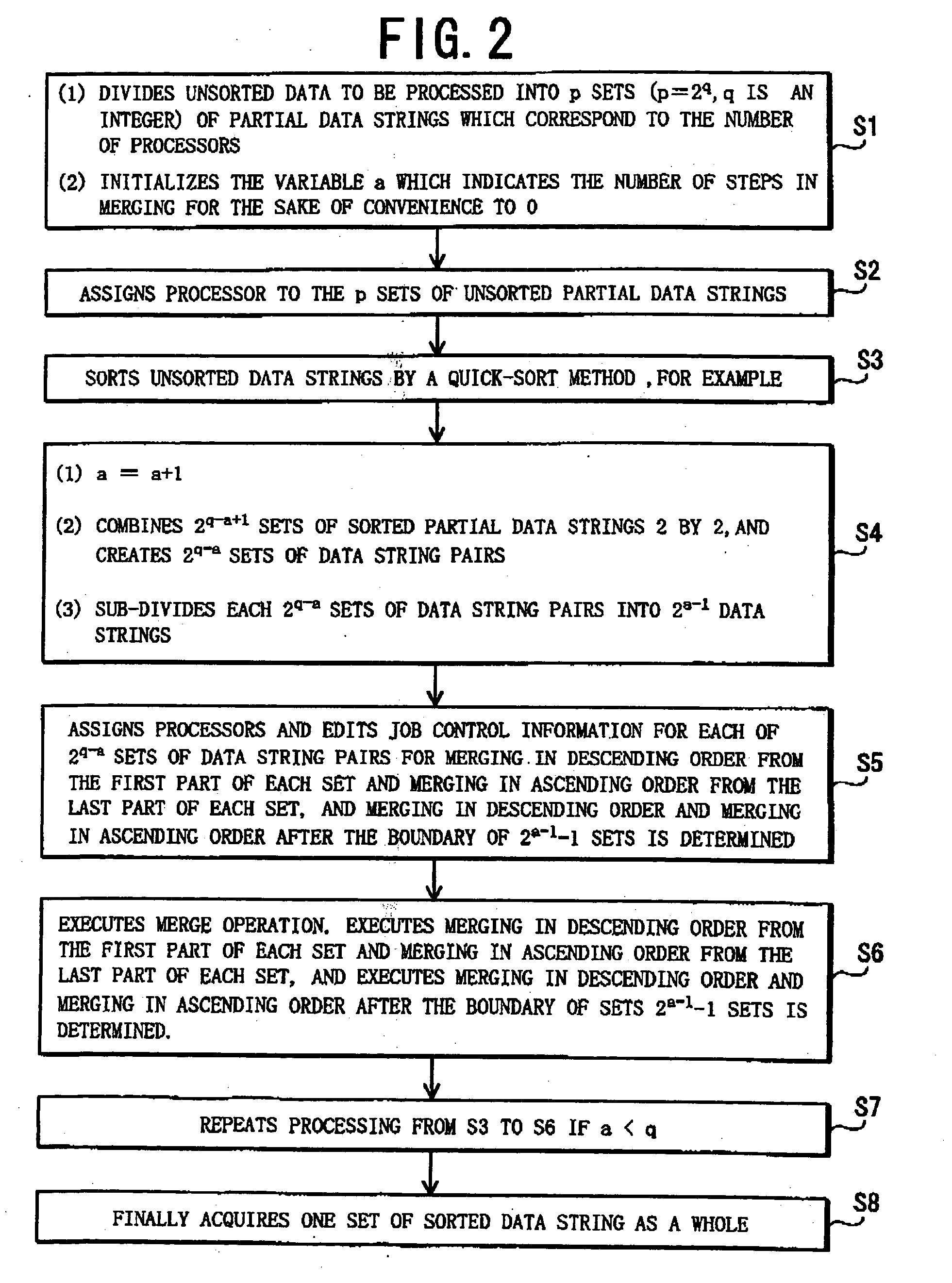Parallel merge/sort processing device, method, and program
- Summary
- Abstract
- Description
- Claims
- Application Information
AI Technical Summary
Benefits of technology
Problems solved by technology
Method used
Image
Examples
embodiment 1
[0092] The device / method according to an embodiment of the present invention will be described with reference to the drawings.
[0093]FIG. 1 shows a general configuration of this device. 1 is a parallel processor for merge processing that includes a plurality of processors and can execute a plurality of tasks simultaneously in parallel. 2 is a parallel processor for area division that divides two sets of sorted data storing pairs into a predetermined number of partial data string pairs and returns them to the processor for management 4. 3 is a parallel processor for sort processing that sorts unsorted data strings existing in a specified area. 4 is a management processor which is in-charge of general control, and receives such information 6 as a location of input data and the number of data, which is received from the outside at the start of the job, and performs such processing as editing information required for tasks to be executed by the parallel processor group to execute, start...
embodiment 2
[0193] The device / method of Embodiment 1 uses merging in descending order and merging in ascending order simultaneously, as shown in FIG. 2. The present invention, however, can also be applied to the case when only one of the merging in descending order and merging in ascending order is used. FIG. 12 is a flow chart when the present invention is applied to the parallel 2 branching merge / sort method. In this case, data is divided into two from the merging in the first step, so p number of processors always operate. The parallel processor to perform merge processing must have only one of the functions of merging in descending order or merging in ascending order, so implementation is easy.
[0194] The processing content of Embodiment 2 is the same as the case of Embodiment 1, so description thereof will be omitted. The difference in FIG. 12 from FIG. 2 is S4b, S5b and S6b.
[0195] The present invention is not limited to the above embodiments, but can be modified in various ways within th...
PUM
 Login to View More
Login to View More Abstract
Description
Claims
Application Information
 Login to View More
Login to View More - R&D
- Intellectual Property
- Life Sciences
- Materials
- Tech Scout
- Unparalleled Data Quality
- Higher Quality Content
- 60% Fewer Hallucinations
Browse by: Latest US Patents, China's latest patents, Technical Efficacy Thesaurus, Application Domain, Technology Topic, Popular Technical Reports.
© 2025 PatSnap. All rights reserved.Legal|Privacy policy|Modern Slavery Act Transparency Statement|Sitemap|About US| Contact US: help@patsnap.com



